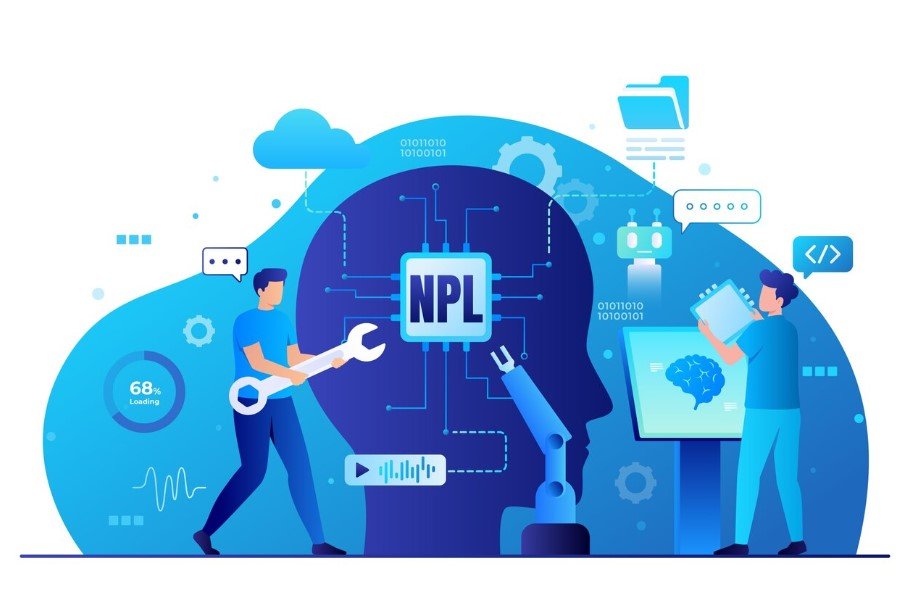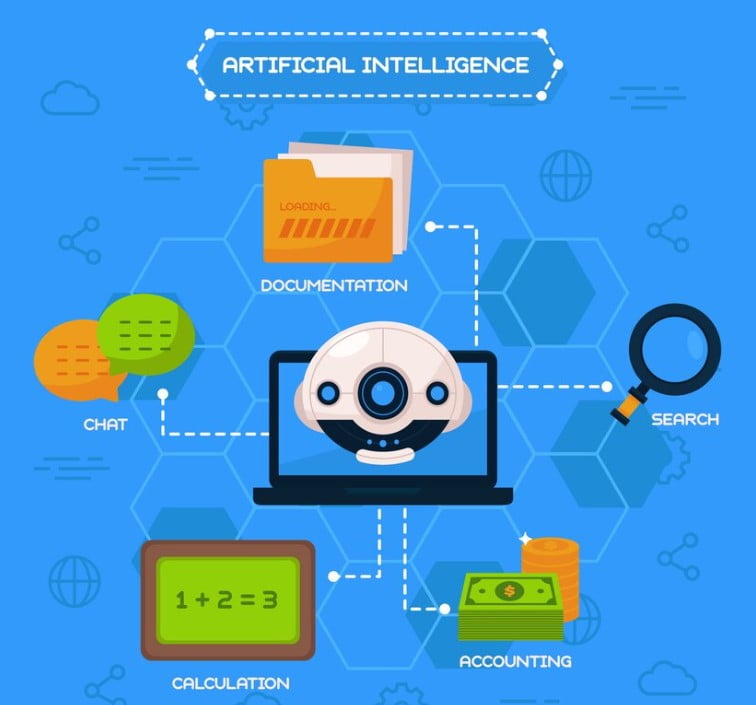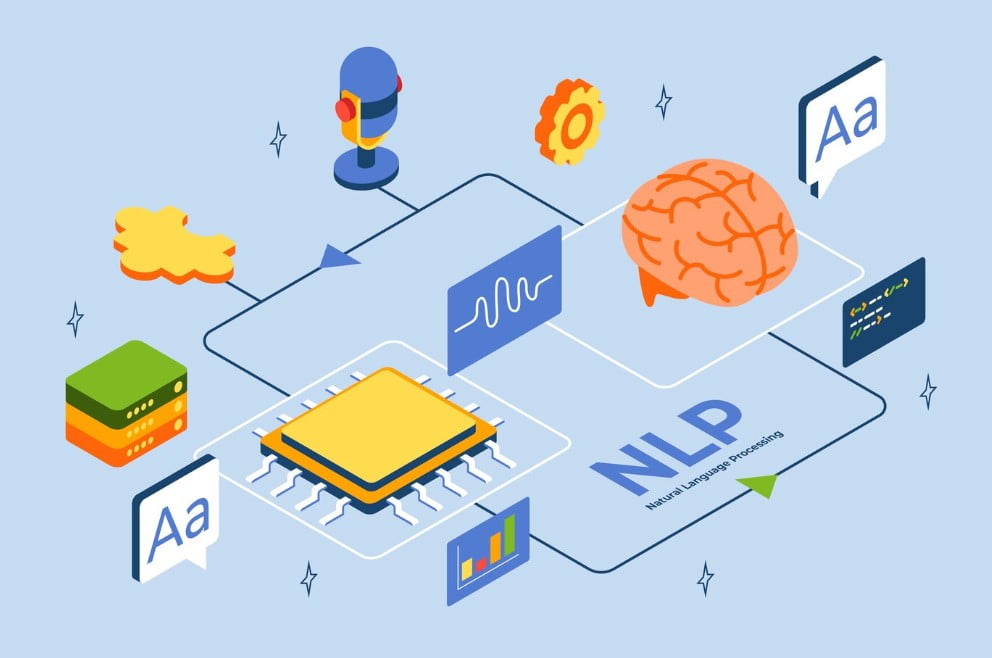Are you tired of laboring over content creation, struggling to find the right words to engage your audience? Fortunately, the solution might be closer than you think. Enter AI Natural Language Processing or AI NLP. In recent years, AI NLP has transformed communication strategies and revolutionized content creation, leading to better engagement and smarter content production.
With AI NLP, machines can now understand and interpret human language, opening up a world of possibilities for businesses, marketers, and content creators alike. From sentiment analysis to named entity recognition, and text summarization, AI NLP algorithms offer more efficient and accurate language processing than ever before.
In this article, we will explore how AI NLP is enhancing language comprehension and powering intelligent chatbots and content creation. We will also examine the key techniques used in AI NLP development and the ethical considerations surrounding AI NLP. So fasten your seatbelt, and let’s take a deep dive into the transformative power of AI Natural Language Processing.

Table of Contents
Understanding AI Natural Language Processing
AI Natural Language Processing (NLP) involves teaching machines to understand and interpret human language. Its purpose is to enable machines to learn and process language like humans do. By utilizing various techniques, such as machine learning, statistical analysis, and linguistics, NLP algorithms enable machines to interpret and respond to human language input.
NLP can be broken down into two categories: rule-based and statistical. Rule-based NLP involves creating an extensive set of language rules for the machine to follow to interpret human language. In contrast, statistical NLP utilizes machine learning and algorithms to enable machines to learn from a vast amount of data and improve their understanding of human language over time.
The applications of NLP are vast and can range from sentiment analysis to language translation. One example of NLP in action is virtual assistants, such as Apple’s Siri or Amazon’s Alexa, which utilize NLP algorithms to interpret user input and provide relevant responses. NLP is transforming the way we interact with machines and is enabling machines to communicate and engage with humans more effectively.
The Purpose of NLP
The primary objective of NLP is to enable machines to understand and interpret human language. NLP algorithms use various techniques, such as language modeling and statistical analysis, to process natural language data and derive meaning from it.
How NLP Works
NLP algorithms use mathematical and statistical models to represent language, including sentence structure, grammar, and semantics. By analyzing this data, machines can learn how to interpret language, respond to queries, or generate automatic replies.
The Benefits of NLP
NLP algorithms can help machines to comprehend the intricacies of human language, including syntax, semantics, and context. Machines can analyze vast amounts of data, learn from it, and continually improve their understanding of human language, leading to more accurate and efficient communication with humans.

The Power of AI NLP Algorithms
AI Natural Language Processing (NLP) algorithms are transforming the way machines understand and interpret human language. These algorithms use artificial intelligence to process and analyze vast amounts of text data, leading to more efficient and accurate language understanding.
Some of the powerful capabilities of AI NLP algorithms include:
- Information Extraction: The ability to extract relevant information from large volumes of unstructured text data, such as identifying people, places, and events.
- Sentiment Analysis: The ability to analyze the tone and emotion in written or spoken language, providing insights into the attitudes and opinions of individuals or groups.
- Topic Modeling: The ability to identify and group together related text data, enabling better organization and classification.
- Text Summarization: The ability to automatically generate concise and informative summaries of large documents, saving time and increasing efficiency.
These capabilities have significant implications for businesses and individuals alike, allowing for more effective communication strategies, personalized customer interactions, and streamlined content creation processes.
The power of AI NLP algorithms lies in their ability to continuously learn and improve over time through machine learning techniques, making them increasingly valuable tools for language comprehension and automation.

Enhancing Language Comprehension with Machine Learning NLP
Machine learning techniques have brought a revolution in AI Natural Language Processing (NLP) systems, improving their ability to understand and interpret human language. The algorithms used in machine learning NLP enable computers to learn from data and identify patterns, enabling more context-aware communication tools.
With machine learning NLP, language comprehension is enhanced, enabling systems to identify the intent behind human language usage. This advances the accuracy and efficiency of automated communication systems, leading to better outcomes for businesses and individuals.
The benefits of machine learning NLP algorithms are vast, ranging from sentiment analysis, subject analysis, and text summarization, to named entity recognition. All of these techniques assist in improving comprehension of text data, whether it’s for efficient communication, automation of customer service, or development of smarter content production.
Applications of AI NLP in Real-World Scenarios
AI NLP is revolutionizing various industries and transforming the way businesses interact with their customers. Here are some practical examples of AI NLP applications:
| Industry | Application | Benefits |
|---|---|---|
| Retail | Customer Service Chatbots | 24/7 customer support, personalized interactions, increased customer satisfaction, reduced response time, and operational costs. |
| Marketing | Sentiment Analysis | Real-time monitoring of customer feedback and opinion, improved content creation, and brand reputation management. |
| News and Media | Content Generation | Automated article writing, efficient news broadcast creation, and real-time news monitoring. |
| Translation | Language Translation | Translation speed, multilingual communication, and cross-border collaboration. |
By leveraging AI NLP, businesses and individuals can benefit from faster and more accurate processing of large volumes of data, which enables better decision-making and content creation. Whether it’s improving customer service, enhancing the quality of marketing campaigns, or automating content generation, AI NLP is quickly becoming an essential tool for businesses aiming to stay ahead of the competition.
Key Techniques in NLP Development
AI Natural Language Processing relies on several key techniques to enable machines to process and understand human language accurately. These include:
Sentiment Analysis
Sentiment analysis involves using machine learning algorithms to identify the emotional tone of a piece of text accurately, whether positive, neutral, or negative. This technique is widely used in applications requiring sentiment detection, such as social media monitoring and customer feedback analysis.
Named Entity Recognition
Named Entity Recognition involves identifying and categorizing named entities, such as people, organizations, and locations, within the text. This technique is useful for generating summaries and extracting relevant information from large data sets.
Topic Modeling
Topic modeling identifies the main themes or topics within a text corpus. Machine learning algorithms are used to cluster words and phrases that frequently occur together, enabling the system to identify the most relevant topics contained within a body of text. This technique is particularly useful for text classification and content recommendation systems.
Text Summarization
Text summarization involves reducing a large piece of text into a concise summary that includes only the most important information. Machine learning algorithms can be used to identify and extract the most critical sentences from a text corpus, generating a condensed summary that provides a quick overview of the content.
By utilizing these NLP techniques to analyze and understand human language, machines can process and respond to text data more intelligently, enabling businesses and individuals to make data-driven decisions with confidence.
NLP and Intelligent Chatbots
One of the most promising applications of AI Natural Language Processing (NLP) is in the development of intelligent chatbots, which can revolutionize customer service by providing personalized and human-like interactions. By utilizing NLP algorithms, these chatbots can interpret and respond to customer queries accurately, providing quick and efficient solutions to problems. Moreover, they can detect customer sentiment and tailor their responses accordingly, ensuring that customer interactions are pleasant and memorable. They also allow businesses to scale their customer support operations without increasing costs significantly. Whether you’re an e-commerce store looking to enhance customer experience or a service provider looking to streamline support operations, NLP-powered chatbots can be a game-changer.
Leveraging NLP for Content Creation
Thanks to AI Natural Language Processing (NLP), marketers and content creators can generate content that engages their audience effectively and efficiently. NLP allows you to produce personalized and relevant content quickly and accurately, increasing productivity and reducing time-consuming tasks such as research and proofreading.
By utilizing NLP algorithms, machines can analyze vast amounts of text data, leading to a better understanding of human language and enabling context-aware content creation. This technology empowers you to identify and target specific topics, goals, and audience segments, thereby improving engagement and conversions.
Moreover, NLP tools can auto-summarize long-form content, supporting the creation of quick and easy-to-digest texts. These summarization tools can help you reduce the length of your content, improving readability for your audience and search engines.
With AI NLP, content creation has never been more efficient or effective, enabling marketers and content creators to focus on their core message and strategic goals.
Overcoming Challenges in NLP
Implementing AI NLP comes with various challenges that developers must overcome to ensure optimal performance. Language ambiguity, context understanding, and data quality are some of the main challenges facing the field.
One key issue in NLP development is language ambiguity, which arises when a word or sentence has multiple meanings. To overcome this, developers are working on creating models that can accurately determine the intended context of the language, relying on advanced algorithms and machine learning techniques.
Context awareness is another obstacle facing NLP development, where understanding the meaning of a word or phrase requires understanding the broader context in which it is used. This challenge is being addressed through the development of more sophisticated models that can identify and analyze contextual clues such as tone, emphasis, and cultural references.
Poor data quality is also a major challenge in NLP development. The quality of the training data directly affects the accuracy of the model’s predictions. To improve data quality, developers are implementing innovative techniques such as data augmentation, machine learning, and human annotation to optimize data efficiency and quality.
Despite these challenges, the field of AI NLP is rapidly advancing, and developers are continuously working to overcome the obstacles it poses.
Ethical Considerations in AI NLP
As AI Natural Language Processing (NLP) transforms the way we communicate and interact with technology, it is important to acknowledge the ethical implications of these advancements.
One concern is bias in AI NLP systems, where language models may reinforce existing stereotypes or prejudices. It is crucial to address this issue by ensuring diverse and representative datasets are used to train these models.
Another area of concern is privacy, as AI NLP systems are capable of collecting and analyzing vast amounts of personal information. It is essential to implement secure and transparent protocols to protect user data.
Finally, the responsible use of language processing technologies is paramount. As AI NLP continues to evolve, it is important to consider the ethical ramifications of these advancements and develop appropriate guidelines and regulations to ensure their proper usage and governance.
Future Trends in AI NLP
As the use of AI Natural Language Processing (NLP) continues to grow, several emerging trends are beginning to shape the future of the technology. With the ongoing need for advanced communication tools, businesses and developers are looking to improve AI NLP’s capabilities and expand its applications.
Conversational AI
The widespread use of voice assistants such as Amazon’s Alexa and Apple’s Siri has highlighted the potential of conversational AI. As AI NLP technology develops, we can expect to see an increased use of chatbots and voice assistants in daily life, providing more personalized and human-like interactions.
Multi-Lingual NLP
Currently, AI NLP systems perform best in languages with significant amounts of data available for analysis. However, as more data becomes accessible, we can expect to see an increase in the capabilities of AI NLP for less prevalent languages. This development will enable easier language translation and communication across diverse populations.
NLP and Big Data
The use of big data in AI NLP will continue to grow, enabling more accurate analysis of large-scale data sets. This development will allow businesses to better understand their customers’ needs, leading to more efficient and relevant communication strategies.
Personalized Content Creation
As AI NLP systems become more advanced, content creation will become more personalized and targeted. By analyzing user behavior and preferences, AI NLP can generate content tailored to individual needs, improving engagement and driving business growth.
Improved Language Processing
The ongoing development of natural language processing techniques will improve AI NLP’s ability to understand context and subtleties in language. As a result, we can anticipate more accurate language processing and better communication strategies.
Conclusion
Overall, the rise of AI Natural Language Processing (NLP) is revolutionizing the way we communicate and create content. By leveraging the power of artificial intelligence, NLP algorithms are enabling machines to understand and interpret human language, leading to smarter content production, better engagement, and more efficient communication strategies.
As you have learned throughout this article, AI NLP is capable of enhancing language comprehension through machine learning techniques, contributing to effective language processing in various applications such as customer service, sentiment analysis, and content creation. However, this technology does come with its challenges, including language ambiguity, context awareness, and ethical considerations such as bias and privacy.
Despite these obstacles, the future of AI NLP is looking bright. As trends continue to emerge and the field advances, we can expect to see even more innovative applications of this technology, further transforming the way we communicate and create content.
Overall, AI NLP has undoubtedly brought significant benefits to businesses and individuals alike, and it will undoubtedly continue to do so as the field progresses.





Permalink
Permalink